Thursday, February 24, 2011
Output Devices
An output device is any piece of computer hardware equipment used to communicate the results of data processing carried out by an information processing system (such as a computer) to the outside world.
In computing, input/output, or I/O, refers to the communication between an information processing system (such as a computer), and the outside world. Inputs are the signals or data sent to the system, and outputs are the signals or data sent by the system to the outside.
Examples of output devices:
In computing, input/output, or I/O, refers to the communication between an information processing system (such as a computer), and the outside world. Inputs are the signals or data sent to the system, and outputs are the signals or data sent by the system to the outside.
Examples of output devices:
From: Computing Essentials, Complete 2011, Timothy J.O'Leary, Linda I.O'Leary
Input Devices
An input device is any peripheral (piece of computer hardware equipment) used to provide data and control signals to an information processing system (such as a computer). Input and output devices make up the hardware interface between computer as a scanner or 6DOF controller.
Many input devices can be classified according to:
Many input devices can be classified according to:
- modality of input (e.g. mechanical motion, audio, visual, etc.)
- the input is discrete (e.g. key presses) or continuous (e.g. a mouse's position, though digitized into a discrete quantity, is fast enough to be considered continuous)
- the number of degrees of freedom involved (e.g. two-dimensional traditional mice, or three-dimensional navigators designed for CAD applications)
- Whether the input is direct or indirect. With direct input, the input space coincides with the display space, i.e. pointing is done in the space where visual feedback or the cursor appears. Touchscreens and light pens involve direct input. Examples involving indirect input include the mouse and trackball.
- Whether the positional information is absolute (e.g. on a touch screen) or relative (e.g. with a mouse that can be lifted and repositioned)
- Game controller
- Gamepad (or joypad)
- Paddle (game controller)
- Wii Remote
Keyboards
A 'keyboard' is a human interface device which is represented as a layout of buttons. Each button, or key, can be used to either input a linguistic character to a computer, or to call upon a particular function of the computer. Traditional keyboards use spring-based buttons, though newer variations employ virtual keys, or even projected keyboards. Examples of types of keyboards include:Pointing devices
A pointing device is any human interface device that allows a user to input spatial data to a computer. In the case of mice and touch screens, this is usually achieved by detecting movement across a physical surface. Analog devices, such as 3D mice, joysticks, or pointing sticks, function by reporting their angle of deflection. Movements of the pointing device are echoed on the screen by movements of the cursor, creating a simple, intuitive way to navigate a computer's GUI.Composite devices

Wii Remote with attached strap
Imaging and Video input devices
Video input devices are used to digitize images or video from the outside world into the computer. The information can be stored in a multitude of formats depending on the user's requirement.- Medical Imaging
Audio input devices
In the fashion of video devices, audio devices are used to either capture or create sound. In some cases, an audio output device can be used as an input device, in order to capture produced sound.- MIDI keyboard or other digital musical instrument
From Wikipedia, the free encyclopedia
Wednesday, February 23, 2011
Tuesday, February 22, 2011
What Is a Microprocessor Chip?
A microprocessor chip is a processing unit which integrates all the capabilities of a CPU into one circuit. Moving all the components of a CPU into one circuit allows for many advantageous in efficiency and up-scalability. It is this "all in one chip" design that has allowed for streamlined CPU improvements over the years in computing.
- Some of the first microprocessors were used in the 1970s within calculators to perform simple mathematical calculations. As research progressed and cost of production diminished these microprocessors evolved into the CPU within every modern computing solution.
- Originally designed for specific electronics applications these microprocessors performed specialized data operations using binary instructions. With the advent of the general purpose processor however, microprocessors have grown to be able to encompass a vast array of possible applications using only one microprocessor design that supports many general purpose operations.
- Modern microprocessors have advanced to such a state that they aid in virtually every endeavor by mankind from missile defense systems to simple calculators. Their continued advancement and implementation have aided in countless discoveries and improvements to our way of life.
- Although research was initially taking place as early as the 1920s it was not until the early 1970s that major advancements in the microprocessor's design and abilities allowed for widespread acceptance and application. Today the microprocessor market is measured in billions of dollars every year with no signs of discontinuation in sight.
- Although the limits of physics currently limits our traditional methods used to advance microprocessor power there are new techniques such as multi-core designs and new materials such as Hafnium being used to explore ever greater advances in this seemingly unlimited technology.
History
Function
Benefits
Time Frame
Potential
From : http://www.ehow.com/facts_5019991_microprocessor-chip.html
Monday, February 21, 2011
Image Editing Software
Image editing software has become ubiquitous in this digital age. Whether you’re creating a web interface or simply cropping and enhancing your family photos – you’ll need your favorite image editor to do it.
In this article, you’ll find the top image editing applications currently out in the market.
Pixelmator
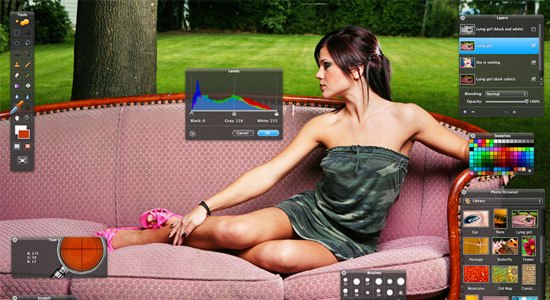
Pixelmator is a fast and powerful image editing software for the Mac operating system. With its intuitive and beautiful Graphical User Interface (GUI), support for layers to organize your document, a large assortment of painting tools, and simple-to-use photo correction tools – Pixelmator is an excellent pick for Mac users who don’t quite need the features (and price tag) of Photoshop.
Inkscape

Inkscape is an open source vector graphics editor much like Adobe Illustrator, CorelDraw, and Xara X. Its default file format is web standards compliant Scalable Vector Graphics (SVG) under W3C’s specifications.
Fireworks

Fireworks is Adobe’s image editing software for the web designers. It excels in several areas over its big brother Photoshop, namely in high-fidelity prototyping of sites and a workspace environment that’s optimized for web designers. It is also a raster and vector hybrid, being able to work with raster-based images and vector-based graphics better and more symbiotically than Photoshop.
Fireworks is a popular tool of choice for many web designers and was once voted as one of the top tools for web designers.
GIMP
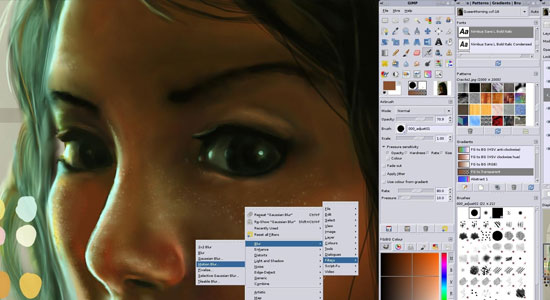
GIMP – which stands for the GNU Image Manipulation Program – is a feature-packed and powerful open source image editor that can be used in all major operating systems (Linux, Mac, and Windows). It has a customizable interface so that you can easily set the view and behavior of GIMP.
It has a huge set of retouching tools that will allow you to perform advanced image retouching and manipulation. The GIMP outputs your work in many common formats like JPG, GIF, PNG, TIFF, and even PSD (Photoshop’s native file format).
Photoshop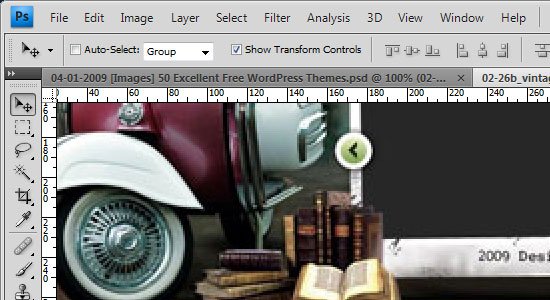
Not surprisingly, Photoshop is the winner by a landslide, garnering over half of all the total votes. Photoshop is what comes to mind when image editing is involved there’s very little that can be said about it that hasn’t been said already.
With an insurmountable amount of features that help you manipulate and enhance photos as well as create web graphics, all while helping you manage your workflow and image editing environment – Photoshop comes in at numero uno as the best image editing software currently in the market.
In this article, you’ll find the top image editing applications currently out in the market.
Pixelmator
Pixelmator is a fast and powerful image editing software for the Mac operating system. With its intuitive and beautiful Graphical User Interface (GUI), support for layers to organize your document, a large assortment of painting tools, and simple-to-use photo correction tools – Pixelmator is an excellent pick for Mac users who don’t quite need the features (and price tag) of Photoshop.
Inkscape

Inkscape is an open source vector graphics editor much like Adobe Illustrator, CorelDraw, and Xara X. Its default file format is web standards compliant Scalable Vector Graphics (SVG) under W3C’s specifications.
Fireworks

Fireworks is Adobe’s image editing software for the web designers. It excels in several areas over its big brother Photoshop, namely in high-fidelity prototyping of sites and a workspace environment that’s optimized for web designers. It is also a raster and vector hybrid, being able to work with raster-based images and vector-based graphics better and more symbiotically than Photoshop.
Fireworks is a popular tool of choice for many web designers and was once voted as one of the top tools for web designers.
GIMP

GIMP – which stands for the GNU Image Manipulation Program – is a feature-packed and powerful open source image editor that can be used in all major operating systems (Linux, Mac, and Windows). It has a customizable interface so that you can easily set the view and behavior of GIMP.
It has a huge set of retouching tools that will allow you to perform advanced image retouching and manipulation. The GIMP outputs your work in many common formats like JPG, GIF, PNG, TIFF, and even PSD (Photoshop’s native file format).
Photoshop

Not surprisingly, Photoshop is the winner by a landslide, garnering over half of all the total votes. Photoshop is what comes to mind when image editing is involved there’s very little that can be said about it that hasn’t been said already.
With an insurmountable amount of features that help you manipulate and enhance photos as well as create web graphics, all while helping you manage your workflow and image editing environment – Photoshop comes in at numero uno as the best image editing software currently in the market.
Kaspersky AntiVirus
Sharing one of the antivirus software:
Kaspersky Lab is an international group that employs over 2,000 highly qualified specialists, has central offices in Moscow, as well as regional headquarters overseeing the activities of local representatives and partners in five global regions: Western Europe; Eastern Europe, the Middle East and Africa; North and South America; the Asia-Pacific region; and Japan. The company currently works in more than 100 countries across the globe and has its own territory offices in 29 countries. The company’s products and technologies provide protection for over 300 million users worldwide.
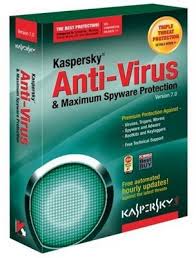
The group’s main decision-making body is the Board of Directors, responsible for setting out an overall development strategy and appointing senior management figures.
Over 300 million people worldwide are protected by Kaspersky Lab products and technologies. Kaspersky Lab’s corporate client-base exceeds 200,000 companies located around the globe, ranging from small and medium-sized businesses, all the way up to large governmental and commercial organizations.
They believe that everyone should be free to get the most from technology – without intrusion or other security worries. Their crack team of specialists gives us the freedom to live our digital life without worrying about our personal information and assets.
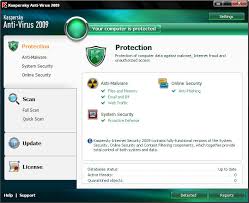
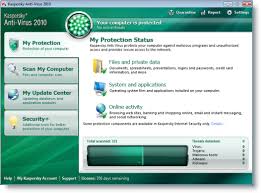
For 13 years, their team of experts has worked on exposing, analyzing and neutralizing IT threats. Along the way, they have amassed a tremendous amount of experience and knowledge about malware and how to deal with it. Today, Kaspersky Lab is firmly positioned as one of the world’s top four leading IT security software vendors for endpoint users (according to IDC).

http://kasperskylab.com
Kaspersky Lab is an international group that employs over 2,000 highly qualified specialists, has central offices in Moscow, as well as regional headquarters overseeing the activities of local representatives and partners in five global regions: Western Europe; Eastern Europe, the Middle East and Africa; North and South America; the Asia-Pacific region; and Japan. The company currently works in more than 100 countries across the globe and has its own territory offices in 29 countries. The company’s products and technologies provide protection for over 300 million users worldwide.
The group’s main decision-making body is the Board of Directors, responsible for setting out an overall development strategy and appointing senior management figures.
Over 300 million people worldwide are protected by Kaspersky Lab products and technologies. Kaspersky Lab’s corporate client-base exceeds 200,000 companies located around the globe, ranging from small and medium-sized businesses, all the way up to large governmental and commercial organizations.
They believe that everyone should be free to get the most from technology – without intrusion or other security worries. Their crack team of specialists gives us the freedom to live our digital life without worrying about our personal information and assets.
For 13 years, their team of experts has worked on exposing, analyzing and neutralizing IT threats. Along the way, they have amassed a tremendous amount of experience and knowledge about malware and how to deal with it. Today, Kaspersky Lab is firmly positioned as one of the world’s top four leading IT security software vendors for endpoint users (according to IDC).
http://kasperskylab.com
HISTORY OF ANTIVIRUS
Most of the computer viruses written in the early and mid 1980s were limited to self-reproduction and had no specific damage routine built into the code.[2] That changed when more and more programmers became acquainted with virus programming and created viruses that manipulated or even destroyed data on infected computers.
There are competing claims for the innovator of the first antivirus product. Possibly the first publicly documented removal of a computer virus in the wild was performed by Bernd Fix in 1987.[3][4]
Fred Cohen, who published one of the first academic papers on computer viruses in 1984,[5] began to develop strategies for antivirus software in 1988[6] that were picked up and continued by later antivirus software developers.
Also in 1988 a mailing list named VIRUS-L[7] was started on the BITNET/EARN network where new viruses and the possibilities of detecting and eliminating viruses were discussed. Some members of this mailing list like John McAfee or Eugene Kaspersky later founded software companies that developed and sold commercial antivirus software.
Before internet connectivity was widespread, viruses were typically spread by infected floppy disks. Antivirus software came into use, but was updated relatively infrequently. During this time, virus checkers essentially had to check executable files and the boot sectors of floppy disks and hard disks. However, as internet usage became common, viruses began to spread online.[8]
Over the years it has become necessary for antivirus software to check an increasing variety of files, rather than just executables, for several reasons:
- Powerful macros used in word processor applications, such as Microsoft Word, presented a risk. Virus writers could use the macros to write viruses embedded within documents. This meant that computers could now also be at risk from infection by opening documents with hidden attached macros.[9]
- Later email programs, in particular Microsoft's Outlook Express and Outlook, were vulnerable to viruses embedded in the email body itself. A user's computer could be infected by just opening or previewing a message.[10]
As always-on broadband connections became the norm, and more and more viruses were released, it became essential to update virus checkers more and more frequently. Even then, a new zero-day virus could become widespread before antivirus companies released an update to protect against it.
http://en.wikipedia.org/wiki/Antivirus_software
Subscribe to:
Comments (Atom)







